Gulf Coast ports fear tariffs could reduce ship traffic and jobs
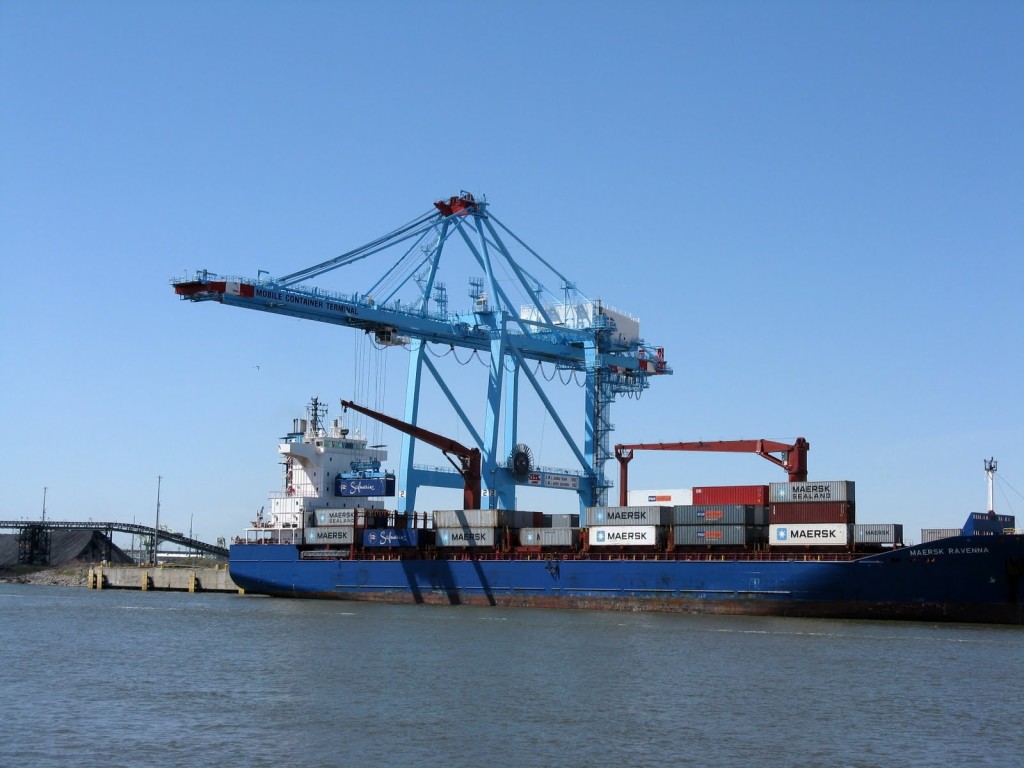
Ports and ground terminals in nearly every state handle goods that are now or will likely soon be covered by import tariffs. Port executives worry that this could mean a slowdown in shipping that would have ripple effects on truckers and others whose jobs depend on trade. The Associated Press analyzed government data and found that from the West Coast to the Great Lakes and the Gulf of Mexico, at least 10 percent of imports at many ports could face new tariffs if President Donald Trump’s proposals take full effect. Since March, the U.S. has applied new tariffs of up to 25 percent on nearly $85 billion worth of steel and aluminum and various Chinese products, mostly goods used in manufacturing. Trump said in a recent tweet, “Tariffs are working big time.” He has argued that the tariffs will help protect American workers and force U.S. trading partners to change rules that the president insists are unfair to the United States. In New Orleans, port officials say a tariff-related drop in shipments is real, not merely a forecast. Steel imports there have declined more than 25 percent from a year ago, according to the port’s chief commercial officer, Robert Landry. The port is scouting for other commodities it can import. But expectations appear to be low. “In our business, steel is the ideal commodity,” Landry said. “It’s big, it’s heavy, we charge by the ton so it pays well. You never find anything that pays as well as steel does.” The port of Milwaukee imports steel from Europe and ships out agricultural products from the Midwest. Steel imports haven’t dropped yet because they are under long-term contracts, said the port director, Adam Schlicht. But there has been “an almost immediate halt” in outbound shipments of corn because of retaliatory duties imposed by the European Union on American products. Much of the corn, he said, “is just staying in silos. They are filled to the brim.” Many other ports have been humming along and even enjoyed an unexpected bump in imports during June and July as U.S. businesses moved up orders to ship before the new tariffs took effect. That started with manufacturing goods and is now spreading to retail items for back-to-school and Christmas. “Some of my retail customers are forward-shipping the best they can to offset proposed tariffs,” says Peter Schneider, executive vice president of T.G.S. Transportation, a trucking company in Fresno, California. Port officials were encouraged by this week’s announcement that the United States and Mexico had reached a preliminary agreement to replace the North American Free Trade Agreement, hoping it might lead to reduced trade barriers. Canada’s participation in any new deal to replace NAFTA, though, remains a major question mark. The port officials continue to worry, though, that Trump will make good on a plan to expand tariffs to an additional $200 billion in Chinese imports — a list that includes fish and other foods, furniture, carpets, tires, rain jackets and hundreds of additional items. Tariffs would make those items costlier in the United States. And if Americans buy fewer of those goods, it would likely lead to fewer container ships steaming into U.S. ports. The impact will be felt keenly at West Coast ports like Los Angeles and Long Beach. Los Angeles Mayor Eric Garcetti, relying on information from his port officials, said his port — the biggest in the United States — could suffer a 20 percent drop in volume if the additional $200 billion in tariffs are imposed against Chinese goods. Jock O’Connell, an economist in California who studies trade, said he doubts a downturn would be so severe — that would match the slump that accompanied the global recession of 2008 — “but we will see a definite impact.” Here are some of the key findings from the AP analysis: — U.S. tariffs will cover goods that are imported at more than 250 seaports, airports and ground terminals in 48 states. — At 18 of 43 customs districts — including those representing ports around Los Angeles, San Francisco, New Orleans and Houston — at least 10 percent of their total import value could be covered by new tariffs if all Trump’s proposals take effect. — Retaliatory duties by China and other countries cover $27 billion in U.S. exports. Eugene Seroka, executive director of the Los Angeles port, worries that “if tariffs make it too expensive to import, there will be an impact on jobs.” Seroka and others don’t expect layoffs on the docks. Union longshoremen — whose average pay last year on the West Coast was $163,000, according to the Pacific Maritime Association, which negotiates for the ports — often have contract provisions ensuring that they are paid even if there’s no work. And there are fewer of them than there were a few decades ago because the advent of shipping containers has reduced the need for people on the docks. Dwayne Boudreaux, an International Longshoremen’s Association official in Louisiana, said, though, that his stevedores are handling about 10 percent less steel from Japan because of the new tariffs. “We don’t think it’s going to (get) worse,” he said. But, he added, “who knows — that could change from the next press conference.” The impact might be greater on truck drivers and warehouse workers. Fewer will be needed, according to O’Connell. Many drivers who deliver shipping containers from the dock to warehouses are independents contracted by trucking companies, and they don’t get paid if there is nothing to haul. Some might leave the profession, said Weston LaBar, CEO of the Harbor Trucking Association in Long Beach, California. “It’s hard to retain drivers,” he said. “If we don’t have work for those drivers, we’re worried they will leave for some other segment of the trucking business or go into another business, like construction.” Less shipping means less revenue for the ports — something that could limit their ability to pay for expansion and improvement projects, according to Kurt Nagle, president of the
Canada says Alabama could be at risk if trade negotiations disintegrate
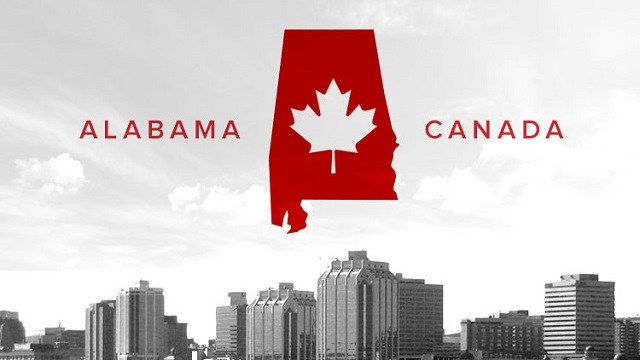
A representative of the Canadian government on Friday warned Alabama jobs could be at risk if NAFTA negotiations are to disintegrate between the U.S. and Canada. In May, Commerce Secretary Wilbur Ross announced new tariffs on steel and aluminum from some of United State’s biggest trading partners – including Canada. In retaliation Canada has imposed new tariffs on a numerous amount of American goods, from steel and aluminum to whiskey and toilet paper. The country has been the top export market for Alabama since at least 2014. With over $4.1 billion being exported to the country in 2017, and $4.2 billion in 2016; the trade relationship between the Yellowhammer State and Canada has created 111,200 jobs. According to the Alabama Newscenter in 2016 alone, 13 different Canadian firms provided new investments in the state totaling $145 million and creating nearly 530 jobs. But Ashante Infantry, the Communications officer for the Canadian Consulate General in Atlanta warns that the relationship between the two entities could be at risk. “The United States and Canada enjoy one of the closest relationships between any two countries in the world,” Infantry said, according to the Alabama Political Reporter. “Since 1994, The North American Free Trade Agreement (NAFTA) has encouraged the trading of goods and services between the U.S. and Canada to promote economic vitality for both countries, but that future is uncertain. If current NAFTA negotiations break down, American jobs could be at risk, and the prices for items such as groceries to cars would likely rise.” “Because of NAFTA, Alabama has seen new businesses form, new job openings posted, and a more vibrant economy,” Infantry continued. “We must ensure that NAFTA is modernized for the future—so that its benefits are more widely shared, and, importantly, so that Alabama’s economy continues to prosper.” Read more on Alabama-Canadian trade relations below: Alabama-Canada Agricultural Trade
Kay Ivey says Alabama could lose up to 4,000 jobs due to tariffs
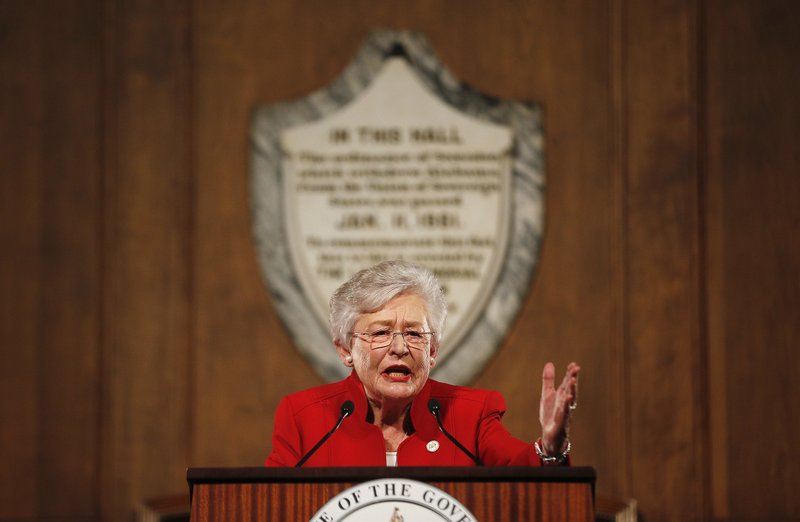
Last week, Alabama governor Kay Ivey released a statement saying the Trump Administration’s new tariffs will cause harm to the Yellowhammer State’s economy. Taking it a step further, she contacted U.S. Secretary of Commerce Wilbur Ross and several members of the Alabama congressional delegation expressing her concerns. “Import tariffs, and any retaliatory tariffs on American made goods, will harm Alabama, the companies that have invested billions of dollars in our state, and the thousands of households which are dependent upon those companies for a good-paying job,” Ivey said in a statement. “I strongly oppose any efforts that may harm those companies that employ thousands of Alabamians and contribute billions to our economy. I am committed to protecting Alabama jobs and consumers, the world over, who are proud to purchase products made in Alabama.” In her letter to Ross, Ivey touted Alabama’s record year in 2017 citing the nearly $3 billion in automotive-related investments, the announcement of a new Mazda-Toyota plant, and the more than 57,000 Alabamians who are already employed by the sates manufacturing sector. “In 2017, Alabama produced almost one million cars and light trucks and 1.7 million engines. However, Alabama’s success relies on access to foreign markets and imports of certain automotive components that become part of the vehicles produced in our state,” Ivey’s letter read. “Last year, Alabama reached a record high of $21.7 billion in exports. Our top export category was automotive, accounting for $10.9 billion of those exports. The largest importers of Alabama made goods and services were Canada, China, Germany, Mexico and Japan – all countries which may be forced to reciprocate in response to any new import tariffs.” Ivey ended her letter to Ross by saying that tariffs places on imported materials used for car manufacturing, and tariffs placed on the state’s exported vehicles would increase costs and cause a high number of Alabamians to lose their jobs. “Estimates show that a ten percent decrease in Alabama-made vehicle exports could result in the loss of approximately 4,000 jobs in Alabama,” the letter continued. “Such a loss would be devastating to thousands of families across our state. These are Alabama families who are dependent on the income from working in these facilities.” “As Governor of the Great State of Alabama, I strongly oppose any efforts that may harm those companies that employ thousands of Alabamians and contribute billions to our economy. I respectfully ask that you not recommend to President Trump the levying of trade tariffs on automobiles and automotive parts.”
In tit-for-tat, Donald Trump threatens more tariffs against China
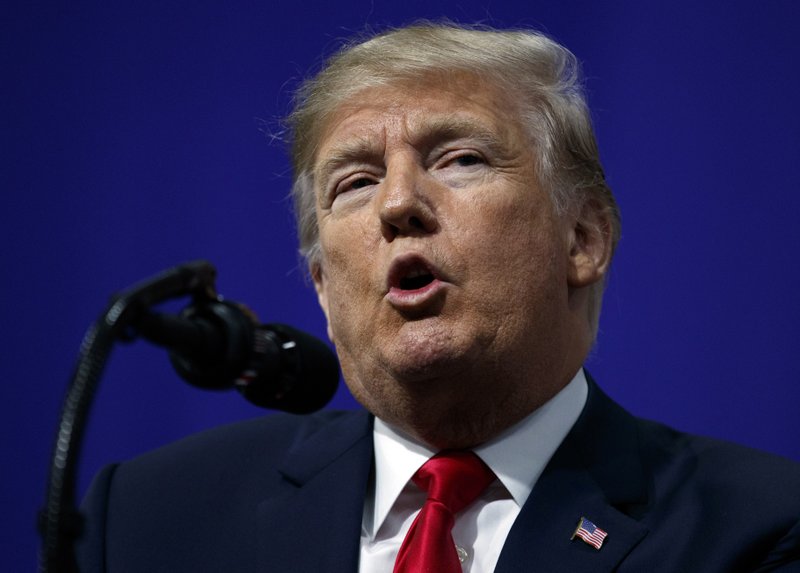
President Donald Trump has directed the U.S. Trade Representative to prepare new tariffs on $200 billion in Chinese imports as the two nations move closer to a potential trade war. The tariffs, which Trump wants set at a 10 percent rate, would be the latest round of punitive measures in an escalating dispute over the large trade imbalance between the two countries. Trump recently ordered tariffs on $50 billion in Chinese goods in retaliation for intellectual property theft. The tariffs were quickly matched by China on U.S. exports, a move that drew the president’s ire. “China apparently has no intention of changing its unfair practices related to the acquisition of American intellectual property and technology,” Trump said in a statement Monday announcing the new action. “Rather than altering those practices, it is now threatening United States companies, workers, and farmers who have done nothing wrong.” Trump added: “These tariffs will go into effect if China refuses to change its practices, and also if it insists on going forward with the new tariffs that it has recently announced.” China’s Commerce Ministry on Tuesday criticized the latest threat of tariffs, saying it was an “act of extreme pressure and blackmail that deviates from the consensus reached by both parties after many negotiations, and is a disappointment to the international community.” “If the U.S. becomes irrational and issues this list, China will have no choice but to adopt strong countermeasures of the same amount and quality,” the ministry statement said. Trump said that if China responds to this fresh round of tariffs, then he will move to counter “by pursuing additional tariffs on another $200 billion of goods.” It wasn’t immediately clear when the new tariffs could be put in place, as the trade office has yet to identify the Chinese goods to be penalized or conduct a legal review. The first round of penalties announced by both nations is set to take effect July 6. The intellectual property sanctions were the latest in a spate of protectionist measures unveiled by Trump in recent months that included tariffs on steel and aluminum imports to the U.S. and a tough rhetoric on trade negotiations from North America to Asia. The escalation in the dispute with China may also serve as a warning to other trading partners with whom Trump has been feuding, including Canada and the European Union. The move quickly drew praise from former Trump senior adviser Steve Bannon, who told The Associated Press: “President Trump told China and the world tonight that America will not back down when it comes to economic aggression.” But Wall Street has viewed the escalating trade tensions with wariness, fearful they could strangle the economic growth achieved during Trump’s watch. Gary Cohn, Trump’s former top economic adviser, said last week that a “tariff battle” could result in price inflation and consumer debt — “historic ingredients for an economic slowdown.” Trump’s comments came hours after the top U.S. diplomat accused China of engaging in “predatory economics 101” and an “unprecedented level of larceny” of intellectual property. Secretary of State Mike Pompeo made the remarks at the Detroit Economic Club as global markets reacted to trade tensions between the U.S. and China. He said China’s recent claims of “openness and globalization” are “a joke.” He added that China is a “predatory economic government” that is “long overdue in being tackled,” matters that include IP theft and Chinese steel and aluminum flooding the U.S. market. “Everyone knows … China is the main perpetrator,” he said. “It’s an unprecedented level of larceny.” “Just ask yourself: Would China have allowed America to do to it what China has done to America?” he said later. “This is predatory economics 101.” Asked to comment on Pompeo’s remarks, the Chinese foreign ministry in Beijing said in a regular briefing with reporters that the U.S. had lost credibility as a free trader. “We don’t want a trade war, but we’re not afraid of a trade war,” ministry spokesman Geng Shuang said. Pompeo raised the trade issue directly with China last week, when he met in Beijing with President Xi Jinping and others. “I reminded him that’s not fair competition,” Pompeo said. Trump had announced a 25 percent tariff on up to $50 billion in Chinese imports. China is retaliating by raising import duties on $34 billion worth of American goods, including soybeans, electric cars and whiskey. Trump also has slapped tariffs on steel and aluminum imports from Canada, Mexico and European allies. Pompeo on Monday described U.S. actions as “economic diplomacy,” which, when done right, strengthens national security and international alliances, he added. “We use American power, economic might and influence as a tool of economic policy,” he said. “We do our best to call out unfair economic behaviors as well.” In a statement, Trump says he has an “excellent relationship” with Xi, “but the United States will no longer be taken advantage of on trade by China and other countries in the world.” Republished with the permission of the Associated Press.
Donald Trump’s goosey claims on trade, jobs
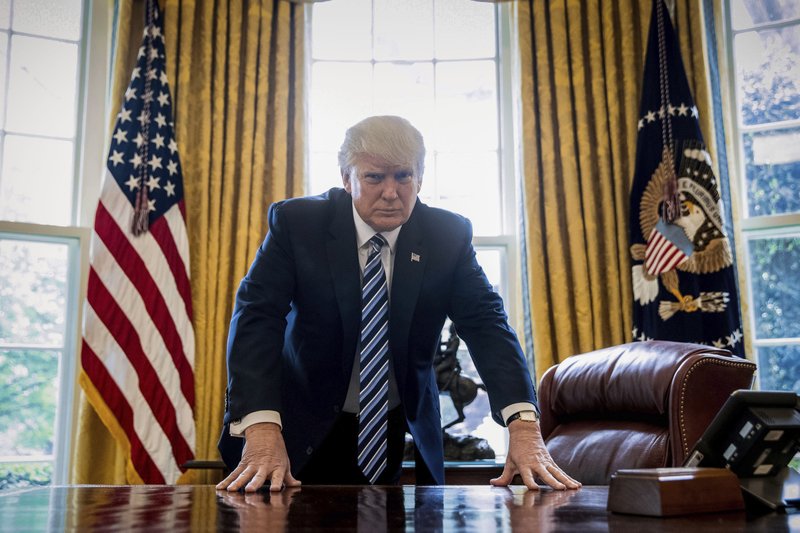
President Donald Trump is using some goosey numbers to rationalize his aggressive rhetoric on trade, disregarding strong points in U.S. competitiveness to paint a dark portrait of a world taking advantage of his country. Conversely, he’s glossing over aspects of the economy that don’t support his faulty contention that it’s the best it’s ever been. The complexities of health care for veterans are also set aside as he hails a new era in the Department of Veterans Affairs’ system. A look at some of his statements over the past week and the reality behind them: TRUMP: “Why isn’t the European Union and Canada informing the public that for years they have used massive Trade Tariffs and non-monetary Trade Barriers against the U.S. Totally unfair to our farmers, workers & companies. Take down your tariffs & barriers or we will more than match you!” — tweet Thursday. TRUMP: “Farmers have not been doing well for 15 years. Mexico, Canada, China and others have treated them unfairly. By the time I finish trade talks, that will change. Big trade barriers against U.S. farmers, and other businesses, will finally be broken. Massive trade deficits no longer!′ — tweet Monday. THE FACTS: Whatever his beef with farm trade with specific countries, he’s wrong in suggesting U.S. agriculture runs a trade deficit. The U.S. exports more food products than it imports, running a $17.4 billion surplus last year. It’s long been a bright spot in the trade picture and it’s why many U.S. farmers are worried about losing markets as Trump retreats from, renegotiates or disparages trade deals. U.S. farmers do brisk business with the three countries he complains about in the tweet, two of them under the umbrella of the North American Free Trade Agreement, which Trump is threatening to leave if it’s not recast to give the U.S. greater advantage. The U.S. exported $20.5 billion in agricultural products last year to Canada, the largest market for U.S. farmers. That made for a modest deficit of $1.8 billion. The U.S. exported $18.6 billion in farm goods to Mexico, running a deficit of $6 billion. The U.S. has a lopsided advantage with China on farm goods, in contrast to manufactured products. It sold $21 billion in agricultural products to China in 2016, for a surplus of $16.7 billion. The Agriculture Department says exports of food products have grown “steadily over the last two decades.” Trump’s unrelievedly negative view of the EU may be grounded in a substantial trade deficit with the continent, but his administration’s trade office takes a longer and more benevolent view of the relationship. “Two-way U.S.-EU trade has been roughly balanced over time,” says the U.S. Trade Representative’s Office, “and the very high levels of foreign investment accounted for by each in the other’s markets means that the transatlantic economy is arguably the most integrated on Earth.” ___ TRUMP: “The EU trade surplus with the U.S. is $151 Billion.” — tweet Thursday. THE FACTS: He’s wrong about the trade deficit with the EU. As he usually does, Trump ignored trade in services in his calculation. The U.S. is more competitive in services than in goods overall, and services are a big part of the trade equation. The U.S. saw a $153 billion trade deficit in goods with the EU last year, but a surplus in services brought the actual trade deficit with the union down to $101 billion. ___ TRUMP: “Best Economy & Jobs EVER, and much more.” — tweet Monday referring to achievement in his first 500 days in office. THE FACTS: May’s unemployment rate of 3.8 percent is not the best ever. And the economy has seen many periods of stronger growth. The lowest unemployment rate since World War II was reached in 1953, when it averaged 2.9 percent, almost a full point lower than today. The job market is certainly strong, with unemployment at an 18-year low, and if it drops another tenth of a point, it’ll be the lowest since 1969. Yet the jobless rate was at or below 4 percent for four straight years back then, from 1966 through 1969, and wages were rising more quickly. The cost of items such as college and health care was much lower then. Overall the economy has yet to show it can sustain growth in excess of 3 percent, as Trump has promised. In the 1990s boom, still the longest on record, the U.S. economy expanded at an average annual pace of 4.3 percent for five years, from 1996 through 2000. In the 1980s, growth averaged 4.6 percent annually from 1983 through 1987. While the economy has picked up from 2016, its best showing since Trump took office was 3.2 percent in last year’s third quarter. ___ TRUMP: “Separating families at the Border is the fault of bad legislation passed by the Democrats. Border Security laws should be changed but the Dems can’t get their act together! Started the Wall.” — tweet Tuesday. THE FACTS: No law mandates that parents must be separated from their children at the border, and it’s not a policy Democrats have pushed or can change alone as the minority in Congress. Children are probably being separated from the parents at the border at an accelerated rate because of a new “zero tolerance policy” being put in place by Trump’s own administration. Announced April 6 by Attorney General Jeff Sessions, the policy directs authorities to prosecute all instances of illegal border crossings, even against people with few or no previous offenses. Administration officials are quick to note that Sessions’ policy makes no mention of separating families. That is correct. But under U.S. protocol, if parents are jailed, their children are separated from them because the children aren’t charged with a crime. So while separating families might not be official U.S. policy, it is a direct consequence of Sessions’ zero-tolerance approach. According to U.S. Customs and Border Protection, more than 650 children were separated from parents at the border during a two-week period in May. ___
SEUS-Canada Alliance to kick off joint meeting in Mobile

Business leaders from across Canada and the Southeastern U.S. will gather in Mobile this week to seek new trade and investment opportunities and continue to build on already strong partnerships. The 11th Annual Southeastern United States – Canadian Provinces (SEUS-CP) Alliance Conference kicks off today in the Port City, with more than 240 participants from the public and private sectors expected to attend. Alabama’s role as host of the conference is a chance to showcase the state, as well as the entire Southeastern U.S., as a premier place to do business, said Greg Canfield, secretary of the Alabama Department of Commerce. “We are excited to welcome the SEUS Canada delegates and show off the dynamic global business community that is flourishing in Mobile and across the state,” he said. “At the same time, we’re eager to find new areas of common ground where we can build partnerships, fuel investments and create jobs in U.S. and Canadian communities.” Vibrant partnership Canada is a Top 5 foreign investor in Alabama. Since 1999, Canadian companies have poured more than $2.5 billion in capital investment in Alabama, creating an estimated 5,700 jobs, according to Commerce data. Meanwhile, the country also figures prominently in the overall SEUS region, which along with Alabama includes Georgia, Mississippi, Tennessee, North Carolina and South Carolina. Two-way trade between Canada and the SEUS states topped $50 billion in 2017. Top Southeastern exports include transportation equipment, machinery, computer and electronic products and chemicals, while top Canadian imports in the region are chemicals, transportation equipment, machinery, plastics and rubber products. Mobile is thrilled to host SEUS Canada, said Bill Sisson, president and CEO of the Mobile Area Chamber of Commerce. “Mobile is home to more than 50 international investments, contributing to our city’s diversified economy,” he said. “During the past few years alone, we’ve been proud to welcome Canadian companies Danby Products and Canfor Southern Pine, with both companies expanding operations here. And most recently we’ve celebrated the new partnership between Airbus and Bombardier. “We look forward to continued alliances with Canada and look forward to welcoming this prestigious group to Mobile,” Sisson added. Mobile, Alabama’s Port City, will host the 11th annual SEUS-CP Alliance conference. (contributed) Shared interests The conference is designed to incorporate business-to-business matchmaking that will facilitate new international partnerships, said Hilda Lockhart, director of the Commerce Department’s Office of International Trade. “These meetings are convened to help small-to-midsize businesses find an export path to Canada and vice versa,” she said. “The Alabama companies that are serving as the anchors for these matchmaking meetings certainly represent some of the state’s premier industries. The industry sectors highlighted at this conference include transportation, energy, and information and communications technology. “All Alliance members are heavily involved in one or more of these sectors, thus enabling companies to participate and meet with possible business partners,” she added. Lockhart said conference sessions will address key topics of interest to both Canada and the U.S., including increased energy demands prompted by the rise of electric vehicles and the challenges of adapting to the technology transformations of the Fourth Industrial Revolution. Workforce development is always a popular topic at the annual conference, and this year’s keynote speaker is Cam Marston. He is an author, columnist, blogger and lecturer who will address how generational demographics are changing the business landscape. “Of course, the conference will engage in talks about trade and investment opportunities and examine upcoming trends to expand our two-way business relationship and how we all stand to gain by further strengthening our partnerships with one another,” Lockhart said. “This is what we believe makes the SEUS-CP annual conference a success and achieves the goal of the Alliance – advancing economic ties and exchange of innovative technologies.” This story originally appeared on the Alabama Department of Commerce’s Made in Alabama website. Republished with permission from the Alabama NewsCenter.
U.S. to push steel, aluminum tariffs on E.U., Canada and Mexico
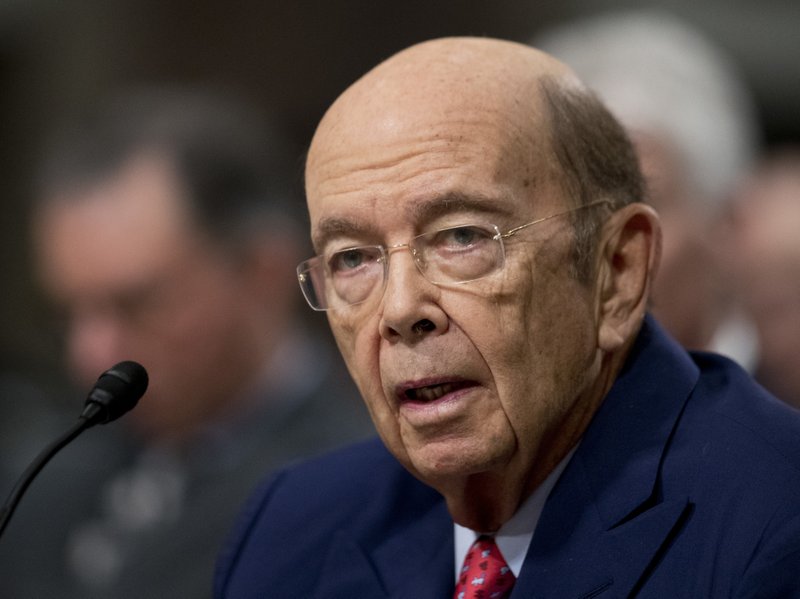
The Trump administration announced Thursday it will impose tariffs on steel and aluminum imports from Europe, Mexico and Canada after failing to win concessions from the American allies. The decision could provoke retaliatory penalties and exacerbate trans-Atlantic and North American trade tensions. Commerce Secretary Wilbur Ross said the tariffs would be 25 percent on steel and 10 percent on aluminum as the administration followed through on the penalties after earlier granting exemptions to buy time for negotiations. Ross told reporters that talks with Canada and Mexico over revising the North American Free Trade Agreement were “taking longer than we had hoped.” Talks with Europe had “made some progress” but not enough for additional exemptions, he said in a conference call from Paris. “We continue to be quite willing and indeed eager to have further discussions,” Ross said. He said he planned to travel to China on Friday for trade talks between the world’s two biggest economies. European officials had braced for the tariffs and the EU has threatened to retaliate against U.S. orange juice, peanut butter and other goods in return. In terms of the NAFTA talks, the tariffs could hinder the negotiations among the North American neighbors. Fears of a global trade war are already weighing on investor confidence and could hinder the global economic upturn. European officials argue that tit-for-tat tariffs will hurt growth on both sides of the Atlantic. Republished with the permission of the Associated Press.
Terri Sewell represents Alabama in bipartisan NAFTA negotiations in Montreal
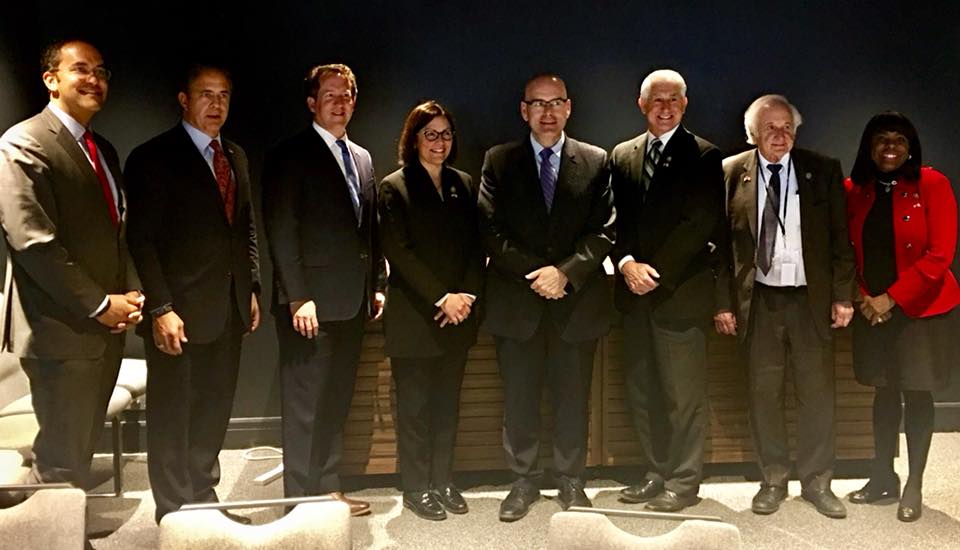
A bipartisan Congressional Delegation (CODEL) from the U.S. House of Representatives departed for a two-day visit to Montreal, Canada for the sixth round of the North American Free Trade Agreement (NAFTA) negotiations on Friday, including Alabama’s own 7th District U.S. Rep. Terri Sewell. The eleven-member delegation met with the U.S. negotiating team and senior government officials from all three countries — the United States, Canada and Mexico — as well as representatives of the American business community to share their priorities for a successful NAFTA negotiation. NAFTA, which governs trade between the U.S., Canada, and Mexico, has a substantial impact on Alabama’s economy as Canada is Alabama’s largest export market, and Mexico is Alabama’s 4th largest. “This weekend, I am attending the 6th round of NAFTA negotiations to make sure that working families in my district have a seat at the table when it comes to our country’s biggest economic decisions,” said Sewell on Saturday. “I support modernizing NAFTA and I believe our country can negotiate an agreement that brings better wages and better jobs to Alabama.” Alabama’s exports to Canada and Mexico have increased by $5.6 billion since NAFTA first went into effect in 1994. For the Birmingham, Ala. metro area, global exports account for $1.9 billion in economic activity. Sewell concluded, “For auto workers, steel workers, and farmers in my district, these talks will have lasting impacts, and I will be pushing for strong and enforceable trade laws that protect their industries. While progress has been made in the past five rounds of negotiations, I hope that all three countries can use this weekend to address many of the more contentious issues in front of us.”
Alabama exports surging in unexpected corners of the world
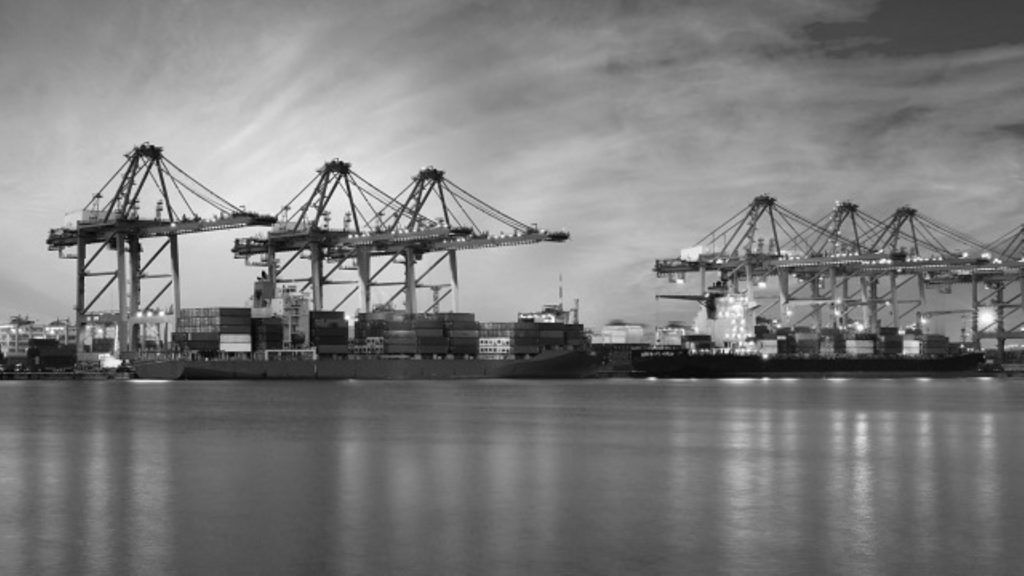
It’s clear that 2016 was a stellar year for Alabama exports, with rising shipments in a number of markets worldwide, signaling even more optimism for the future. The top five destinations for state goods and services – Canada, China, Germany, Mexico and the United Kingdom – remained relatively unchanged from 2015 and most showed year-over-year growth. Overall, Alabama-made goods were shipped to 189 countries. A number of them, while not among the top five, showed significant growth in 2016, including Kuwait, Russia, Taiwan and the United Arab Emirates. The Alabama Department of Commerce is always studying trade trends among state businesses and manufacturers, using the information to plan seminars and trips aimed at helping companies boost their export business, said Hilda Lockhart, director of Commerce’s Office of International Trade. Economic engine With Alabama’s 2016 exports reaching a record $20.55 billion, increasing 6.4 percent from the previous year, officials are looking to build on that momentum, Lockhart said. “We know rising exports for Alabama companies in overseas markets means greater potential for new jobs and investment back home,” Lockhart said. “International trade is truly a local economic engine, and Alabama workers and communities benefit from the growth.” U.S. Commerce Department figures show the state’s exports have risen 15 percent since 2011 and 48 percent since 2006. Vehicles are the state’s top export, by a large margin. Other key categories include chemicals, primary metals, paper products and non-electrical machinery, a category that includes combustion engines, agricultural machinery, metalworking machine tools and much more. Lockhart offered a closer look at some of the fastest-growing markets for Alabama exports, and what’s driving them: KUWAIT: Alabama’s exports to the Persian Gulf country increased to $104.9 million in 2016, a 285 percent spike from the previous year. The largest increases were in fabricated metal products, chemicals and paper. “This year Alabama was Kuwait’s No. 1 trading partner in the nation for fabricated metal products, perhaps due to the country’s recent expenditures on various hydrocarbon and petrochemical refineries, such as the $10 billion Olefins 3 plant,” Lockhart said. Currently in the pre-execution phase, the Olefins 3 plant will produce 1.4 million tons of ethylene a year when it is completed. The petrochemical is commonly used in the manufacturing process. RUSSIA: Shipments of state exports to Russia rebounded in 2016 to $102.1 million, after a poor showing the previous year, with major increases in the export of non-electrical machinery, chemicals and paper. Alabama was Russia’s No. 5 trading partner among U.S. states for non-electrical machinery products.Russia’s demand for machinery is “driven by the government’s strategy to modernize Russian industry across several sectors, including power generation, transportation, defense, automotive and aerospace,” according to the U.S. Foreign Commercial Service. Lockhart said the drop in exports in 2015 likely occurred because of the contraction in the price of oil that year, which caused a recession in Russia and other oil-producing countries. TAIWAN: Exports from Alabama to Taiwan nearly doubled in 2016, increasing to approximately $200 million. The largest gains were in chemicals, computer and electronic products, and paper. “Chemical exports alone accounted for more than half of the 2016 total, showing a two-year increase from $19.6 million in 2014 to $102.7 million in 2016,” Lockhart said. The state was Taiwan’s No. 6 trading partner in the nation for chemicals, predominantly in the category of basic chemicals, which include industrial gases used in the semiconductor production process. Lockhart said the semiconductor industry, including manufacturing, design and packaging, is a cornerstone of the Taiwanese IT economy, so it is likely that the increased exports are feeding into this sector. UAE: Alabama firms shipped $467.8 million in exports to the United Arab Emirates in 2016, an increase of more than 100 percent compared to exports just two years earlier. Much of the growth took place in the categories of transportation equipment, non-electrical machinery and chemicals. The state was the UAE’s No. 5 trading partner in the U.S. for transportation equipment, with this category alone accounting for $396.2 million of the export total for the year. “Aerospace products make up the bulk of these transportation equipment exports as the UAE develops its burgeoning satellite and Mars mission programs, expands its military and increases investment in the commercial airline industry,” Lockhart said. Meanwhile, other up and coming markets have shown significant growth over the past five years, and they could be potential targets of new, increased efforts to fuel trade, Lockhart said. The countries include Vietnam, Oman, the Bahamas, Denmark, Finland, Kenya, Liberia, Hungary and Bosnia-Herzegovina. This story originally appeared on the Alabama Department of Commerce’s Made in Alabama website. Republished with permission of Alabama NewsCenter.
Donald Trump, Justin Trudeau to discuss women in workforce
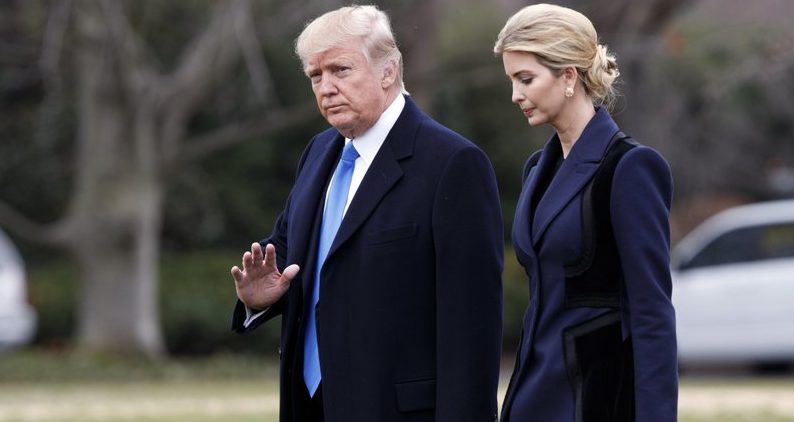
President Donald Trump and Canadian Prime Minister Justin Trudeau will participate in a roundtable discussion about women in the workforce Monday, showing the rising policy influence of the first daughter who has stressed her commitment to issues like child care. A White House official said the two countries would launch a new task force called the United States Canada Council for the Advancement of Women Business Leaders-Female Entrepreneurs. The official said Trudeau’s office reached out to discuss working on a joint effort, noting that this was seen as an area of shared interest between both leaders. Ivanka Trump, who has been a vocal advocate for policies benefiting working women, was involved in recruiting participants and setting the agenda for the meeting and will attend, the official said. Ivanka Trump stressed the importance of maternity leave and child care on the campaign trail, and has recently been meeting with business leaders to discuss those issues. The White House official said that Trump’s economic agenda will include a “focus on ensuring women enter and stay in the work force and addressing barriers facing female entrepreneurs.” The official requested anonymity to provide details in advance of the meeting. Advancing women has been a clear priority for Trudeau. In late 2015, he drew attention for naming a Cabinet that was 50 percent women, saying that he chose a group that “looks like Canada.” Trump did not promise to appoint a gender-balanced Cabinet and has named a smaller number of women and minorities to top jobs. “Our team reached out and suggested as it is an important part of the prime minister’s agenda and of our economic growth plan,” a Canadian official said. “It seemed like a natural fit given their commitments in their platform as well.” The official requested anonymity to discuss the meeting in advance. Trump has offered a childcare plan and has signaled an interest in working on those issues. The business round table will be part of an itinerary that includes a bilateral meeting and a working lunch. The visit is crucial for Canada, which relies heavily on the United States for trade. Trump has said he wants to discuss his plan to overhaul the North American Free Trade Agreement, which involves the United States, Canada and Mexico. There are fears Canada could unintentionally be sideswiped as Trump negotiates with Mexico. Female executives from the United States and Canada are expected for the round table, including General Electric Canada CEO Elyse Allan, TransAlta Corp. CEO Dawn Farrell, Linamar Corp. CEO Linda Hasenfratz, T&T Supermarket Inc. Tina Lee and Schnitzer Steel Industries CEO Tamara Lundgren. Also expected are Julie Sweet, CEO-North America for Accenture, NRStor CEO Annette Verschuren, Monique Leroux, chair of the board of directors for Investissement Québec. Carol Stephenson, of the board of directors for General Motors Co. will attend in place of the GM CEO. Additionally, the meeting will include Katie Telford, Trudeau’s chief of staff, Canadian Foreign Minister Chrystia Freeland and Dina Powell, assistant to the president and senior counselor for economic initiatives. Powell, Telford and Freeland were involved in setting up the council and recruiting the CEOS. The council includes many of the meeting attendees, as well as Mary Barra, General Motors CEO, GE Vice Chair Beth Comstock and Catalyst CEO Deborah Gillis. Topics at the event will likely include issues like providing maternity leave and childcare, how to recruit and retain women and how to better support women entrepreneurs. Ivanka Trump does not have an official White House role. But her husband, Jared Kushner, is a senior adviser to the president and she stepped away from her executive positions at the Trump Organization and her lifestyle brand to move her family to Washington. She has been at several public White House events so far and has been privately sitting down with CEOs and thought leaders as she weighs how to pursue her policy interest. Republished with permission of the Associated Press.
Hillary Clinton in a landslide — in endorsements: Do they matter?
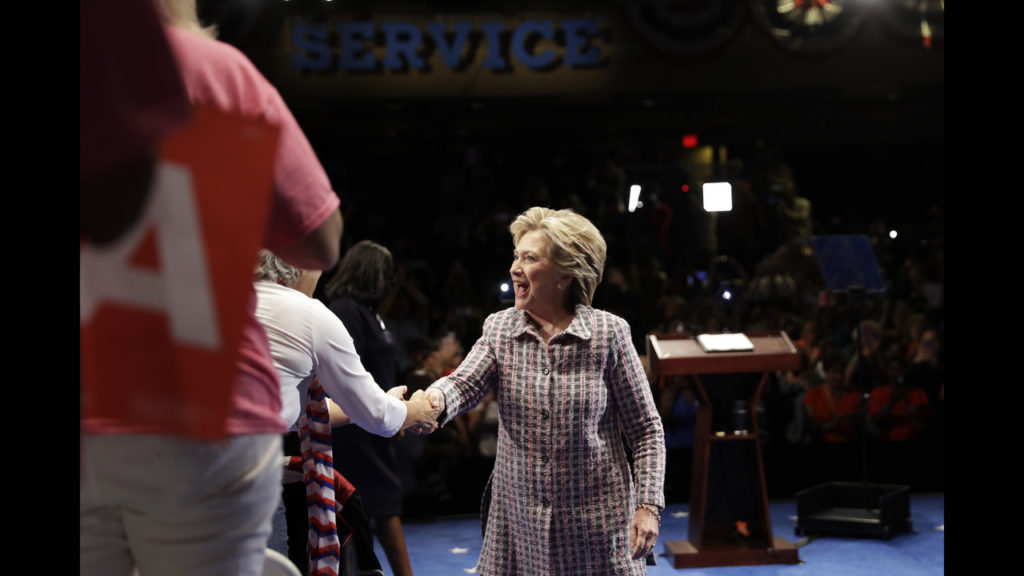
“A clear and present danger to our country.” ”Xenophobia, racism and misogyny.” ”Beneath our national dignity.” Those aren’t excerpts from attack ads by Hillary Clinton‘s campaign. Those are longtime Republican newspapers disavowing Donald Trump. If newspaper endorsements equaled victory, Clinton would be in line for a historic landslide. She has been endorsed by dozens of papers ranging from such expected backers as The New York Times to such once-certain GOP advocates as The Dallas Morning News, the Arizona Republic and the Cincinnati Enquirer, which on Sept. 23 called for “a leader who will bring out the best in Americans, not the worst.” On Friday, USA Today ended its tradition of not taking sides and published an anti-endorsement, contending that Trump “lacks the temperament, knowledge, steadiness and honesty that America needs from its presidents.” The paper didn’t back Clinton but advised readers to “Stay true to your convictions.” The same day, The San Diego Union-Tribune endorsed Clinton — the first Democrat it has endorsed in its history. Trump, meanwhile, is supported by far fewer publications. They include a paper owned by son-in-law Jared Kushner (the New York Observer) and the National Enquirer, a tabloid whose parent company is run by Trump friend David Pecker and whose content usually focuses on celebrity scandal. Trump scorned the negative editorials Friday, tweeting that “The people are really smart in canceling subscriptions to the Dallas & Arizona papers & now USA Today will lose readers! The people get it!” “I don’t read USA Today,” he said later to WZZM13 in Grand Rapids, Michigan, “It’s not much of a newspaper as far as I’m concerned.” If Clinton’s overwhelming advantage among editorial boards mirrors the revulsion Trump has inspired from officials in both parties, the endorsements may also illustrate the decline in newspapers’ power to shape opinions and the strength of Trump’s anti-establishment appeal. Polls show Clinton trailing in Texas, Arizona and Ohio despite the unexpected support of GOP papers. During the primaries, the venerable conservative paper the New Hampshire Union Leader endorsed Chris Christie, only to have the New Jersey governor lose the state decisively, drop out and back Trump. The Arizona Republic favored John Kasich in the state’s GOP primary, but Trump won easily, and the Ohio governor finished fourth. “Newspaper endorsements don’t have nearly the impact they used to,” says Mark MacKinnon, co-host of Showtime’s political show “The Circus” and a longtime adviser who has worked with former President George W. Bush and Sen. John McCain of Arizona, the GOP’s 2008 presidential candidate. “There are just way too many other sources of information for voters today.” “They are just part of the wave,” says political historian Rick Perlstein, who is in the midst of a multivolume series on the rise of the conservative movement and has written in depth about elections of the 1960s, ’70s and beyond. “They don’t start anything, and probably didn’t determine much — but betoken a widespread disgust in the air.” Readers may not let editorials tell them how to vote, but they care enough to respond. Dallas Morning News editor Mike Wilson recalls a group of about a dozen people demonstrated against the endorsement across the street from the paper. Wilson went down to talk with them. In a series of tweets, he described a discussion that began angrily but settled into a serious dialogue. “I got a few words in and persuaded zero people,” he tweeted. Wilson said he’s received some messages from Clinton supporters thanking the newspaper for the editorial, but hasn’t heard that it changed anyone’s mind. “They’re not really meant to end arguments, they’re mean to start discussions, and this one certainly did that,” he said. “One of the reasons we exist is to take editorial positions on things that can improve lives in our community,” he said. “That is one of the core functions of a newspaper.” Peter Bhatia, editor and vice president of audience engagement at the Cincinnati Enquirer, said he knows that the impact of editorial endorsements has lessened. “The days of people taking the endorsements of an editorial board and going into the polling place with them are pretty much long gone,” he said. But he still considers it an important obligation. The newspaper’s editorial board came to consensus pretty quickly so they decided to get it out. As anticipated, some readers lashed out. Bhatia said he received some 150 angry emails and there were some canceled subscriptions. “I am impressed by how thoroughly rehearsed some of the attacks on Hillary Clinton are,” he said. “They have a very familiar bent to them.” He also cites their incivility, but doesn’t find that unusual in the internet age. He said there also have been a few dozen positive notes. He said he gave an interview to CBC radio in Canada and got a long email from someone who found his arguments convincing. Just one problem: The person lives in Canada and can’t vote. Republished with permission of the Associated Press.


